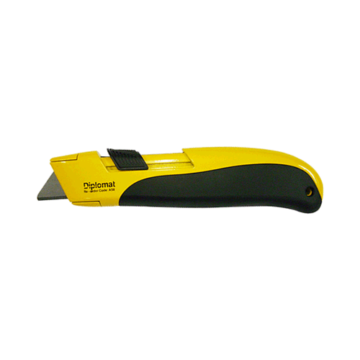With an ever increasing emphasis on workplace safety around the world, safety knives have emerged as a essential tool for workers in industries such as food preparation and processing, manufacturing, construction, healthcare and many others. As the use of safety knives has increased in leaps and bounds, the number of options has also increased significantly.
With many options at our disposal, choosing the right safety knife is not the easiest of tasks. To opt for the right product, you will have to take several points into consideration including your cutting task, materials to be cut using the safety knife, frequency of performing the cut, required features and level of safety and the cutting environment.
- A wide range of cutting tasks is performed across industries and many of them are workplace specific in nature. In most of the workplaces, the most frequently performed cutting tasks include cutting cardboard, opening boxes, cutting tape, cutting textile and film, removing shrink wrap and strapping..
- Some of the most common types of materials cut using safety knives may include anything from fleece, rubber, carpet, leather, foam and yarn to bags, films, tape, shrink wraps, cardboard, and strapping. Regardless of the material to cut, there is always a safety knife suitable for it.
- Depending on the workplace, there can be users making intermittent cuts to the ones cutting throughout the day. Fatigue can start setting in for users engaged in cutting tasks for longer durations. This is why a safety knife must be lightweight and ergonomic yet durable and strong enough for continuous use. Blade quality is also important because users need to apply more pressure while using poorly made blades and this increases the risk of injury.
- Though most workplaces can be similar in nature, certain cutting environments can be extremely sensitive. For example, metal detect safety knives are useful for pharmaceutical and food preparation industries because the presence of contaminants in the production process may result in health issues for customers, product recalls and serious equipment damage.
- Understanding the required level of safety is critical to selecting the right safety knife. Automated blade retraction, fully automated blade retraction and concealed blade types are the three levels of safety knives. If you require the highest level of safety, you should opt for concealed blade knives. In fully automatic retractable knives, the blade retracts automatically even when the trigger is pressed or the finger of the user is on the slider. Finally, automatic blade retraction safety knives rely heavily on users as they are required to remove their thumbs from the slider.
- Today’s advanced safety knives come with many additional features and you must consider these features before making a purchasing decision. Instead of a slider mechanism for engaging the blade, some products now come with a trigger slider. Some other key decisions for you is to choose are between long blade and short blade extension, disposable and replaceable blade, tool-free and tool required blade change, metal and plastic knife body.
If you have any other questions related to safety knives, please contact us today at ShockWatch. We are one of Australia’s most trusted industry leader in industrial safety and accident prevention solutions.


